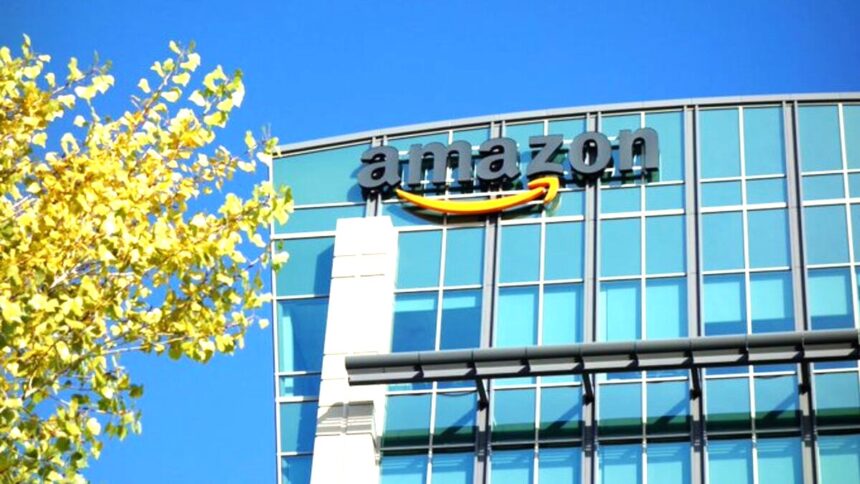Amazon is undergoing a significant transformation in its workplace policy, with CEO Andy Jassy announcing a decisive move to bring corporate employees back to the office five days a week. This change, which will take effect on January 2, 2025, marks a substantial shift from the company’s previous hybrid work model. In this article, we’ll delve into the implications of this policy change, its impact on Amazon’s culture, and the rationale behind it.
Amazon’s New Office Policy: A Return to Pre-Pandemic Norms
Amazon is reinstating its pre-pandemic office requirements, which means that starting in January 2025, corporate employees will be expected to work from the office five days a week. This marks a departure from the current policy, which allows employees to work remotely up to two days a week.
Amazon CEO Andy Jassy wants the company back to 5-days-a-week at the office effective January 2nd, 2025.
He believes organization has too many managers and processes from recent growth.
And wants to “operate the world’s largest startup” and having more individual contributors… pic.twitter.com/fbgsXkV4Mn
— Trung Phan (@TrungTPhan) September 16, 2024Exceptions to the Rule
There will be some flexibility in the new policy. As Jassy noted in his memo, employees will still be able to work remotely under specific circumstances, such as when dealing with personal emergencies, illness, or other significant situations. Remote work exceptions can also be granted through a manager’s approval if an employee has a pre-existing arrangement.
Why the Change? Strengthening Culture and Enhancing Collaboration
Jassy’s announcement emphasizes the importance of maintaining and enhancing Amazon’s unique corporate culture. According to Jassy, the decision to return to full-time office work is driven by the belief that being together in a physical workspace fosters better collaboration, creativity, and a stronger connection to the company’s culture.

The Benefits of Office Work
Amazon’s leadership argues that in-office work promotes a more effective and connected team environment. Key benefits highlighted include:
- Enhanced Learning and Collaboration: Physical proximity can facilitate more spontaneous and effective brainstorming sessions, as well as easier mentoring and knowledge sharing.
- Stronger Cultural Ties: Being in the same space can help reinforce Amazon’s culture, which emphasizes customer obsession, rapid decision-making, and a high level of ownership.
- Increased Efficiency: Face-to-face interactions can potentially reduce the time spent on meetings and streamline decision-making processes.
Restructuring for Agility: Reducing Layers of Management
In addition to the return to office work, Amazon is also focusing on streamlining its organizational structure. The company plans to reduce the number of managerial layers to enhance efficiency and speed.
What Does This Mean for Managers?
Amazon is aiming to increase the ratio of individual contributors to managers by at least 15% by the end of Q1 2025. This move is intended to flatten the organizational hierarchy, reduce bureaucracy, and empower employees to make quicker decisions.
Impact on Company Dynamics
This restructuring effort is expected to:
- Simplify Decision-Making: With fewer management layers, decisions can be made more quickly and closer to the operational front lines.
- Reduce Bureaucracy: By cutting down on excess management layers, the company hopes to eliminate unnecessary processes that can slow down progress.
Addressing Concerns: Balancing Office Work and Flexibility
Amazon’s new policy has raised some concerns among employees who may have adapted their lives around the previous hybrid work model. To address these concerns, the company is providing a transition period to help employees adjust to the new requirements.
Implementation and Transition
The company’s Global Real Estate and Facilities (GREF) team is working on plans to accommodate the shift back to assigned desk arrangements in certain locations, while others will maintain agile desk setups. Employees will be notified of these changes as the implementation date approaches.
A Focus on Culture: The Importance of Staying Nimble
Jassy’s memo underscores Amazon’s commitment to preserving and strengthening its culture, which he describes as a core element of the company’s success. The emphasis on operating like a “world’s largest startup” reflects a desire to maintain the innovative and customer-centric approach that has characterized Amazon’s growth.
The Bureaucracy Mailbox
In line with this cultural focus, Amazon has introduced a “Bureaucracy Mailbox” where employees can report examples of unnecessary processes or excessive rules. Jassy himself will review these submissions to help streamline and simplify company procedures.
Looking Ahead: What This Means for Amazon Employees
As Amazon transitions back to full-time office work and restructures its management layers, employees can expect significant changes in their work environment and dynamics. The shift aims to reinforce the company’s culture, enhance collaboration, and drive more agile decision-making processes.
Final Thoughts
Amazon’s new office policy and management restructuring represent a bold step towards reinforcing the company’s unique culture and operational efficiency. While the move back to the office might require adjustments from employees, it is part of a broader strategy to strengthen Amazon’s position as a leading innovator and customer-focused company.
For those navigating these changes, staying informed and flexible will be key. The company’s leadership is committed to making this transition as smooth as possible and ensuring that the benefits of a unified office environment are realized while maintaining the core values that have driven Amazon’s success.
Read More : “Historic Floods Ravage Central Europe: Evacuations, Record Rainfall, and Rising Casualties”






